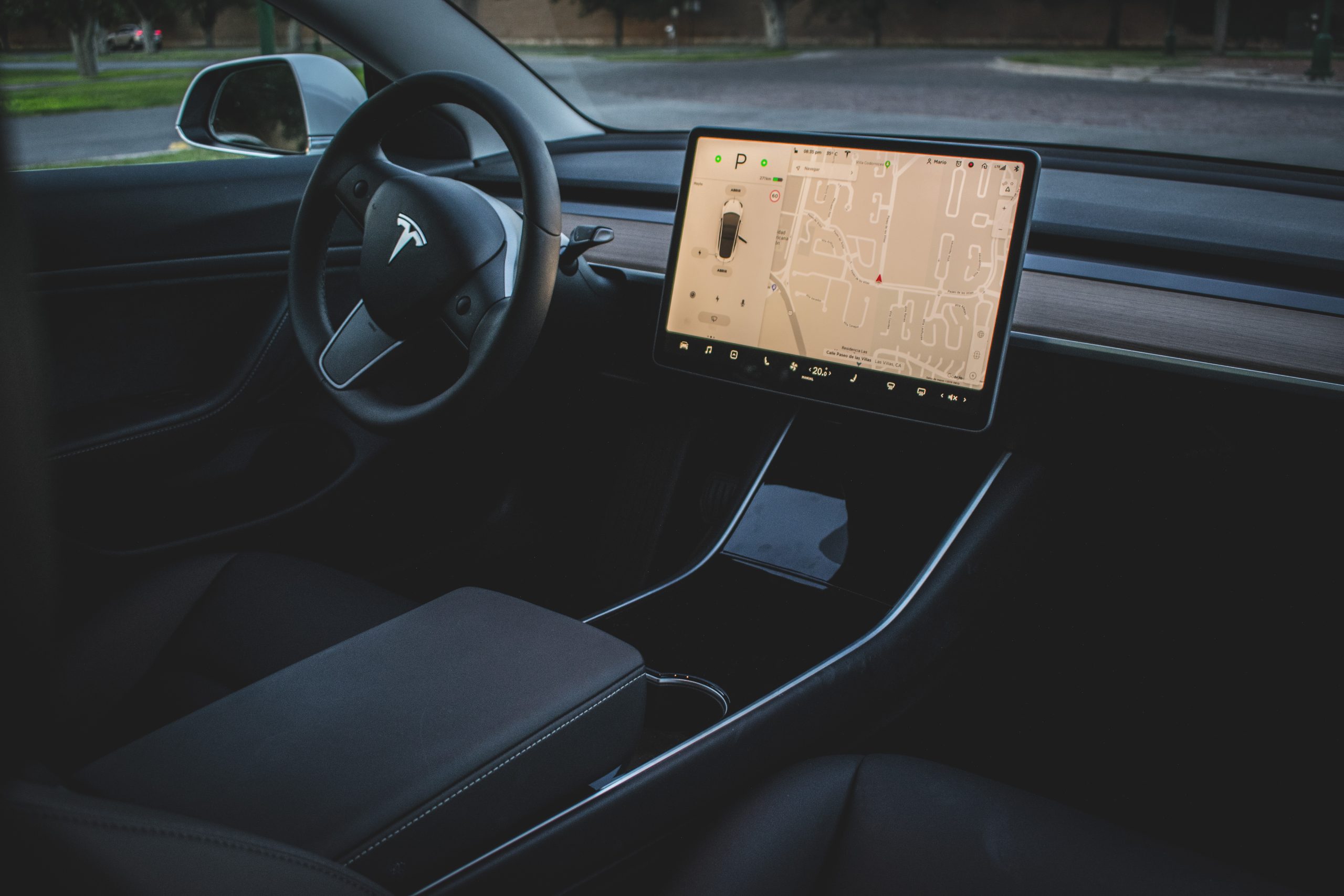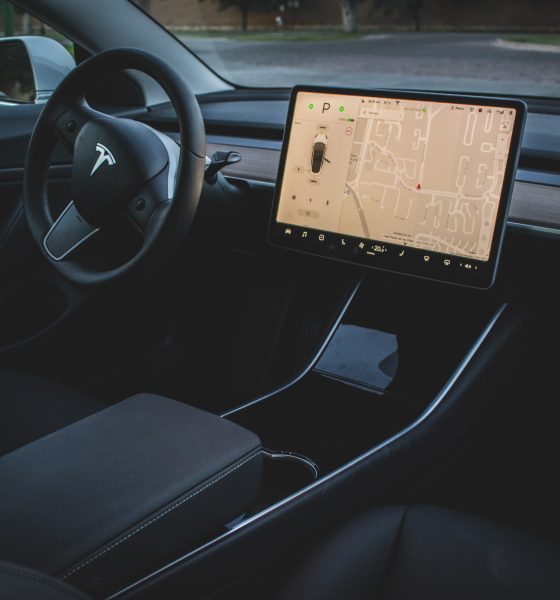The user experience of Tesla’s electric cars is centered mostly on the vehicles’ large, high-resolution displays. Coupled with custom software that provides a quick, smartphone-like experience, Tesla’s screens in its vehicles are already among the best in the auto industry. But in the spirit of the company’s habit of constant innovation, it appears that Tesla is looking to improve the quality of its displays even more.
A recently published patent from the electric car maker, titled “Holographic Decorated Glass for Screen Color Matching,” outlines a way for the electric car maker to improve the viewing angles of its vehicles’ displays. In the patent, Tesla notes that “because display screens typically have a periodic micro-structure (e.g., a pixelated structure), the color of the display screen may be dependent on the angle at which a viewer is looking at the display screen.” This results in viewing angles that have significant room for improvement, even among high-quality screens.
“The non-displaying portions of the device may be unable to match this angular color dependence of the display screen, resulting in a readily visible boundary between the display screen and the non-displaying portions of the device. Accordingly, there is a need for better color integration between the displaying portions of a device and the non-displaying portions of the device,” Tesla wrote.
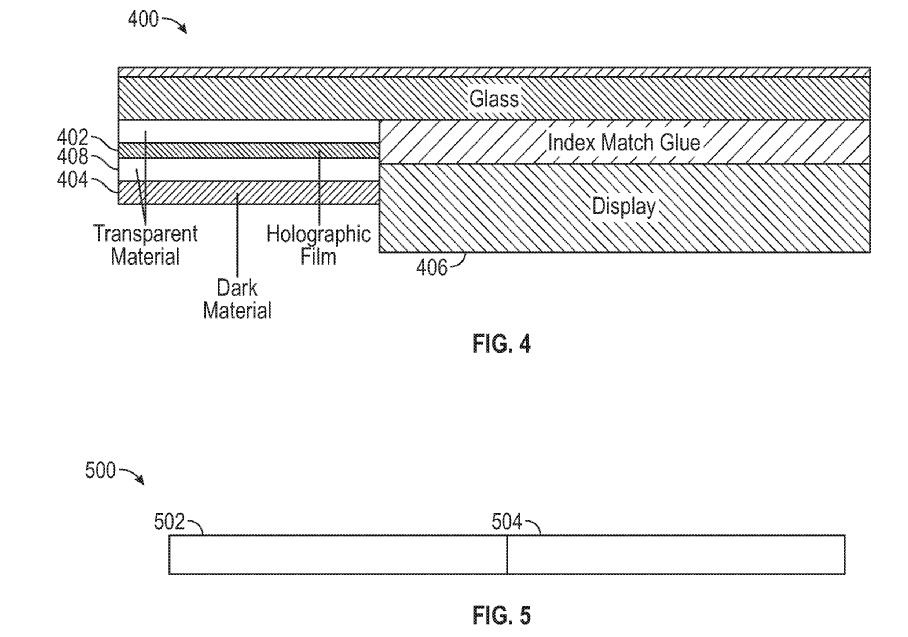
To address this, Tesla opted to utilize a pigmented frame and index match glue to coat its vehicles’ screens, as well as a holographic glass panel. By adopting these techniques, Tesla expects to provide its vehicles with a screen that can offer optimal viewing angles for all passengers. This is especially useful when paired with the company’s entertainment features such as Tesla Theater or Tesla Arcade, which are accessible when a vehicle is on Park.
Tesla describes its use of index match glue and holographic glass panels as follows.
“Index match glue 206 may change the perceived color and appearance of display 204 to match the color and appearance of surrounding frame 202 within a small range of viewing angles. For example, index match glue 206 may change the perceived color and appearance of display 204 to match the color and appearance of frame 202 within a range of viewing angles approximately normal to the surface of display 204. However, due to the angular dependence of the perceived color and appearance of display 204 (due to display 204 having a holographic structure resulting from the pixels of display 204), index match glue 206 may be unable to change the perceived color and appearance of display 204 to match the color and appearance of frame 202 within a broad range of viewing angles so that the boundary between frame 202 and display 204 is invisible to a viewer. Accordingly, with display 204 coated with index match glue 206 surrounded by frame 202, the boundary between frame 202 and display 204 may still be readily visible at certain viewing angles.”
“The directionality of the periodic structure of holographic film 402 may approximate or match the directionality of the periodic structure of display 406. For example, if display 406 includes a plurality of periodic features (e.g., pixels) oriented in a first direction (e.g., rectangles, triangles, or the like having a common orientation), holographic film 402 may include a plurality of periodic features oriented in the first direction. FIG. 5 shows exemplary system 500 in which the visibility of a boundary between display 504 and a surrounding frame including a holographic structure (here holographic glass panel 502) may be reduced or eliminated over a broad range of viewing angles. In exemplary system 500, a periodic structure is formed on holographic glass panel 502 directly. For example, laser etching on holographic glass panel 502 may produce the periodic structure responsible for the holographic effect of holographic glass panel 502. Holographic glass panel 502 may include holographic structures formed in a variety of other ways, including ablation, etching, deposition processes, and the like.”
The full text of Tesla’s “Holographic Decorated Glass for Screen Color Matching” patent could be viewed here.
A color-matched display with optimal viewing angles might be a rather minor aspect of a vehicle, but for connected cars such as Teslas, it is these little things that make a difference in user experience. A car that boasts some of the most advanced automotive tech available in the auto segment today, after all, deserves a screen that is on par with some of the best mobile devices on the market.
Tesla’s display design outlined in its recently published patent can come in handy as well, particularly as the electric car maker introduces more updates to its fleet of vehicles. Among these is a “Fade Mode,” which Elon Musk has hinted at in the past. While responding to a Twitter follower last year, Musk responded positively to the suggestion of adding an option that allows drivers to dim their vehicles’ display while a car is in motion. This, together with features like V10’s Joe Mode, could help make long trips in Tesla’s electric vehicles much more convenient for passengers.

News
Tesla owners could be impacted by new EV tax credit extension rule
We confirmed with a Tesla Sales Advisor that any current orders that have the $7,500 tax credit applied to them must be completed by December 31, meaning delivery must take place by that date. However, it is unclear at this point whether someone could still claim the credit when filing their tax returns for 2025 as long as the order reflects an order date before September 30.
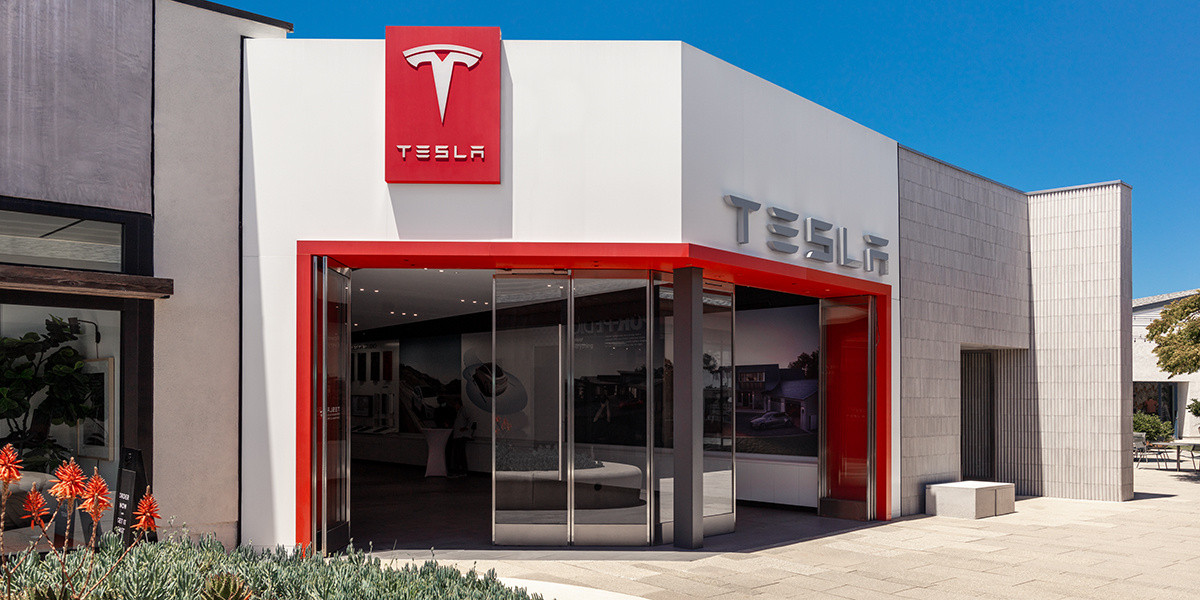
Tesla owners could be impacted by a new EV tax credit rule, which seems to be a new hoop to jump through for those who benefited from the “extension,” which allowed orderers to take delivery after the loss of the $7,500 discount.
After the Trump Administration initiated the phase-out of the $7,500 EV tax credit, many were happy to see the rules had been changed slightly, as deliveries could occur after the September 30 cutoff as long as orders were placed before the end of that month.
However, there appears to be a new threshold that EV buyers will have to go through, and it will impact their ability to get the credit, at least at the Point of Sale, for now.
Delivery must be completed by the end of the year, and buyers must take possession of the car by December 31, 2025, or they will lose the tax credit. The U.S. government will be closing the tax credit portal, which allows people to claim the credit at the Point of Sale.
🚨UPDATE: $7,500 Tax Credit Portal “Closes By End of Year”.
This is bad news for pending Tesla buyers (MYP) looking to lock in the $7,500 Tax Credit.
“it looks like the portal closes by end of the year so there be no way for us to guarantee the funds however, we will try our… pic.twitter.com/LnWiaXL30k
— DennisCW | wen my L (@DennisCW_) December 15, 2025
We confirmed with a Tesla Sales Advisor that any current orders that have the $7,500 tax credit applied to them must be completed by December 31, meaning delivery must take place by that date.
However, it is unclear at this point whether someone could still claim the credit when filing their tax returns for 2025 as long as the order reflects an order date before September 30.
If not, the order can still go through, but the buyer will not be able to claim the tax credit, meaning they will pay full price for the vehicle.
This puts some buyers in a strange limbo, especially if they placed an order for the Model Y Performance. Some deliveries have already taken place, and some are scheduled before the end of the month, but many others are not expecting deliveries until January.
Elon Musk
Elon Musk takes latest barb at Bill Gates over Tesla short position
Bill Gates placed a massive short bet against Tesla of ~1% of our total shares, which might have cost him over $10B by now
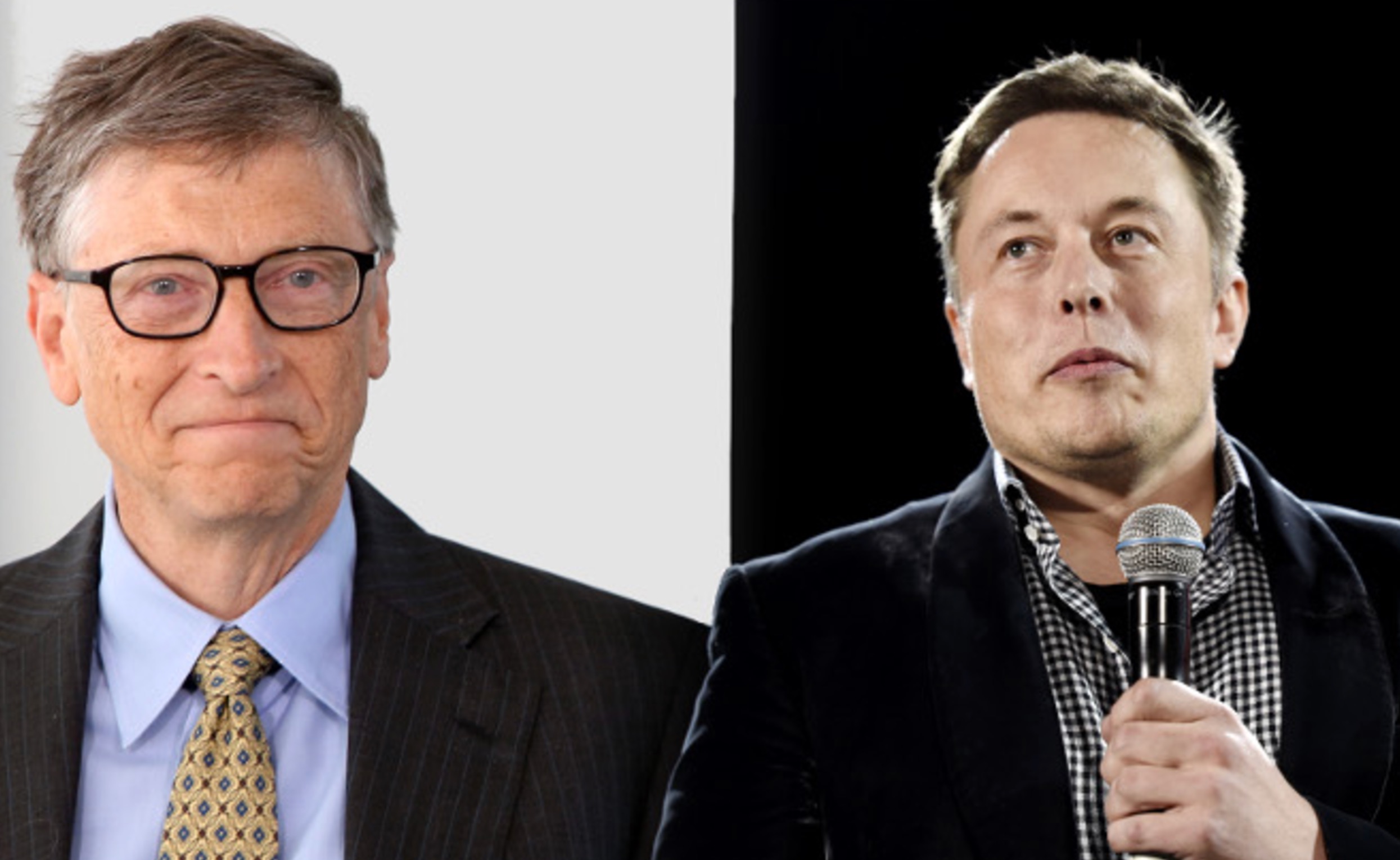
Elon Musk took his latest barb at former Microsoft CEO Bill Gates over his short position against the company, which the two have had some tensions over for a number of years.
Gates admitted to Musk several years ago through a text message that he still held a short position against his sustainable car and energy company. Ironically, Gates had contacted Musk to explore philanthropic opportunities.
Elon Musk explains Bill Gates beef: He ‘placed a massive bet on Tesla dying’
Musk said he could not take the request seriously, especially as Gates was hoping to make money on the downfall of the one company taking EVs seriously.
The Tesla frontman has continued to take shots at Gates over the years from time to time, but the latest comment came as Musk’s net worth swelled to over $600 billion. He became the first person ever to reach that threshold earlier this week, when Tesla shares increased due to Robotaxi testing without any occupants.
Musk refreshed everyone’s memory with the recent post, stating that if Gates still has his short position against Tesla, he would have lost over $10 billion by now:
Bill Gates placed a massive short bet against Tesla of ~1% of our total shares, which might have cost him over $10B by now
— Elon Musk (@elonmusk) December 17, 2025
Just a month ago, in mid-November, Musk issued his final warning to Gates over the short position, speculating whether the former Microsoft frontman had still held the bet against Tesla.
“If Gates hasn’t fully closed out the crazy short position he has held against Tesla for ~8 years, he had better do so soon,” Musk said. This came in response to The Gates Foundation dumping 65 percent of its Microsoft position.
Tesla CEO Elon Musk sends final warning to Bill Gates over short position
Musk’s involvement in the U.S. government also drew criticism from Gates, as he said that the reductions proposed by DOGE against U.S.A.I.D. were “stunning” and could cause “millions of additional deaths of kids.”
“Gates is a huge liar,” Musk responded.
It is not known whether Gates still holds his Tesla short position.
Cybertruck
Tesla Cybertruck gets small change that makes a big difference
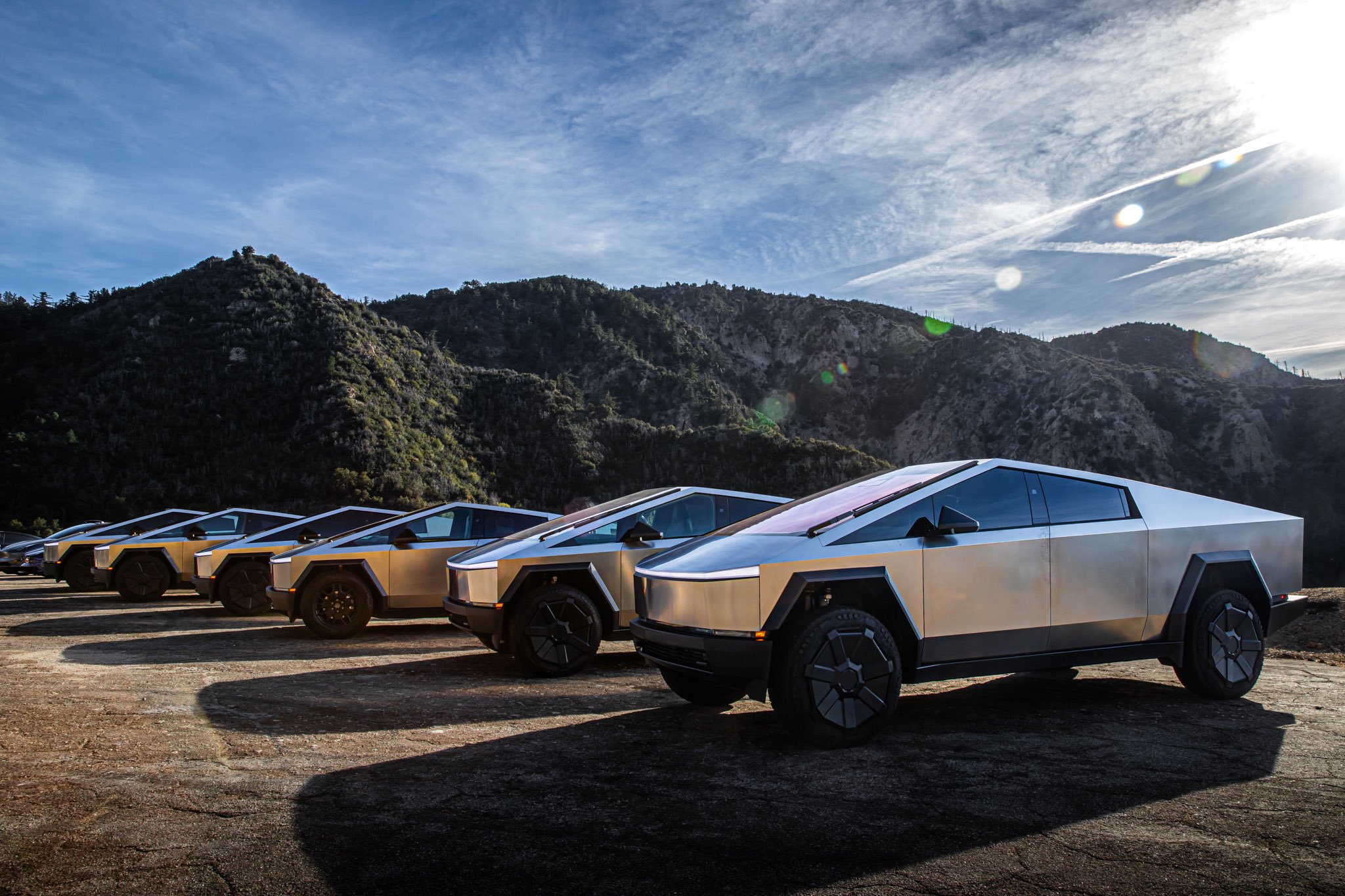
Tesla made a change to the Cybertruck, and nobody noticed. But to be fair, nobody could have, but it was revealed by the program’s lead engineer that it was aimed toward simplifying manufacturing through a minor change in casting.
After the Cybertruck was given a Top Safety Pick+ award by the Insurance Institute for Highway Safety (IIHS), for its reputation as the safest pickup on the market, some wondered what had changed about the vehicle.
Tesla makes changes to its vehicles routinely through Over-the-Air software updates, but aesthetic changes are relatively rare. Vehicles go through refreshes every few years, as the Model 3 and Model Y did earlier this year. However, the Cybertruck is one of the vehicles that has not changed much since its launch in late 2023, but it has gone through some minor changes.
Most recently, Wes Morrill, the Cybertruck program’s Lead Engineer, stated that the company had made a minor change to the casting of the all-electric pickup for manufacturing purposes. This change took place in April:
We made a minor change on the casting for manufacturability in April. Our Internal testing shows no difference in crash result but IIHS only officially tested the latest version
— Wes (@wmorrill3) December 17, 2025
The change is among the most subtle that can be made, but it makes a massive difference in manufacturing efficiency, build quality, and scalability.
Morrill revealed Tesla’s internal testing showed no difference in crash testing results performed by the IIHS.
The 2025 Cybertruck received stellar ratings in each of the required testing scenarios and categories. The Top Safety Pick+ award is only given if it excels in rigorous crash tests. This requires ‘Good’ ratings in updated small and moderate overlap front, side, roof, and head restraints.
Additionally, it must have advanced front crash prevention in both day and night. Most importantly, the vehicle must have a ‘Good’ or ‘Acceptable’ headlights standard on all trims, with the “+ ” specifically demanding the toughest new updated moderate overlap test that checks rear-seat passenger protection alongside driver safety.
